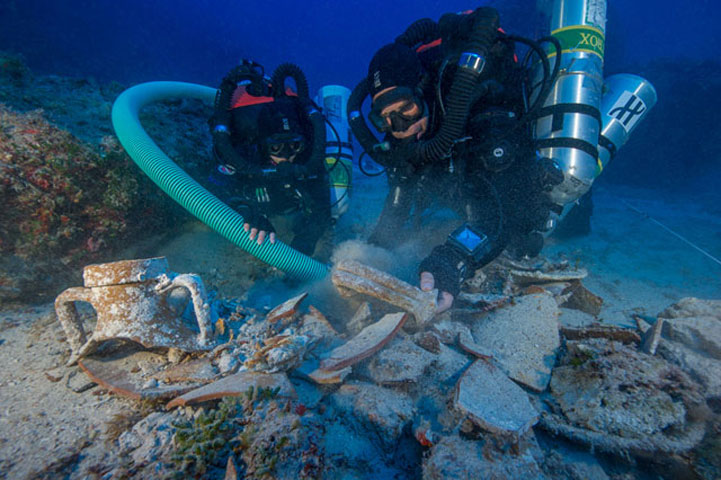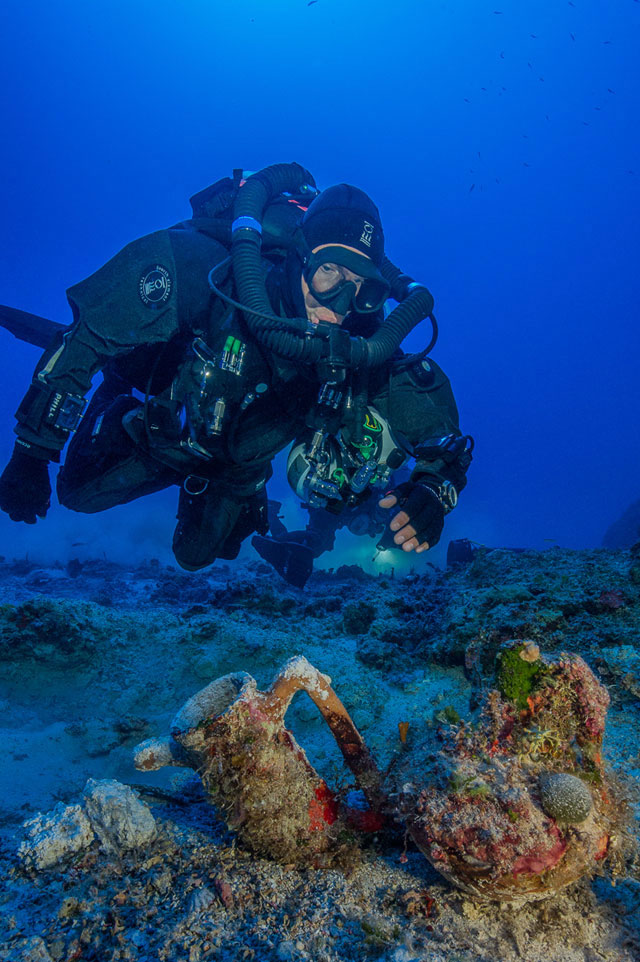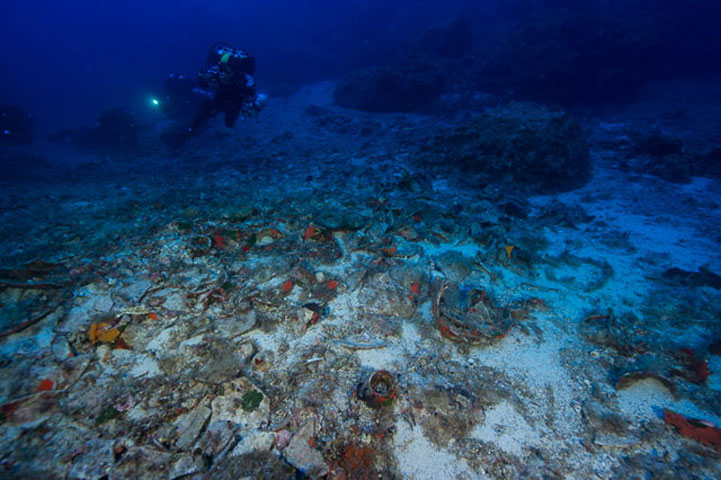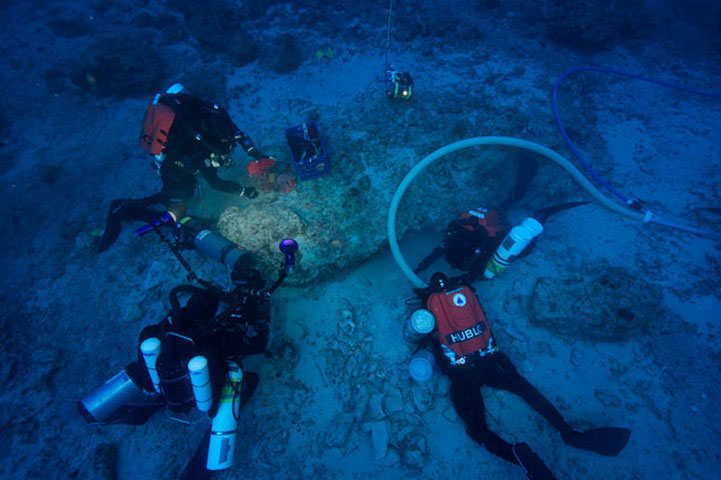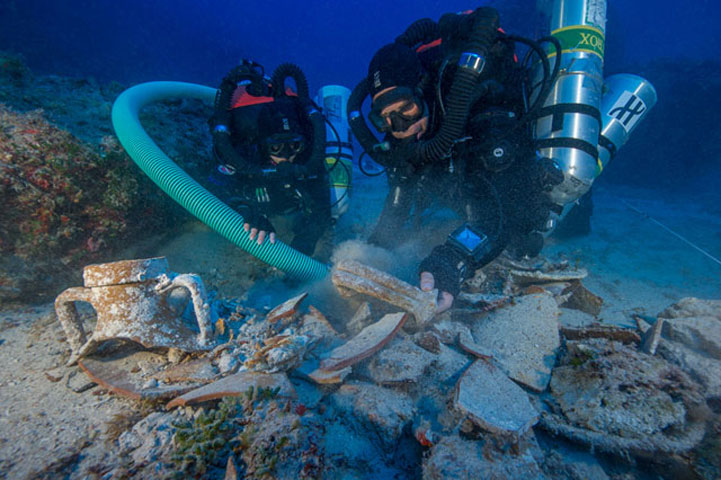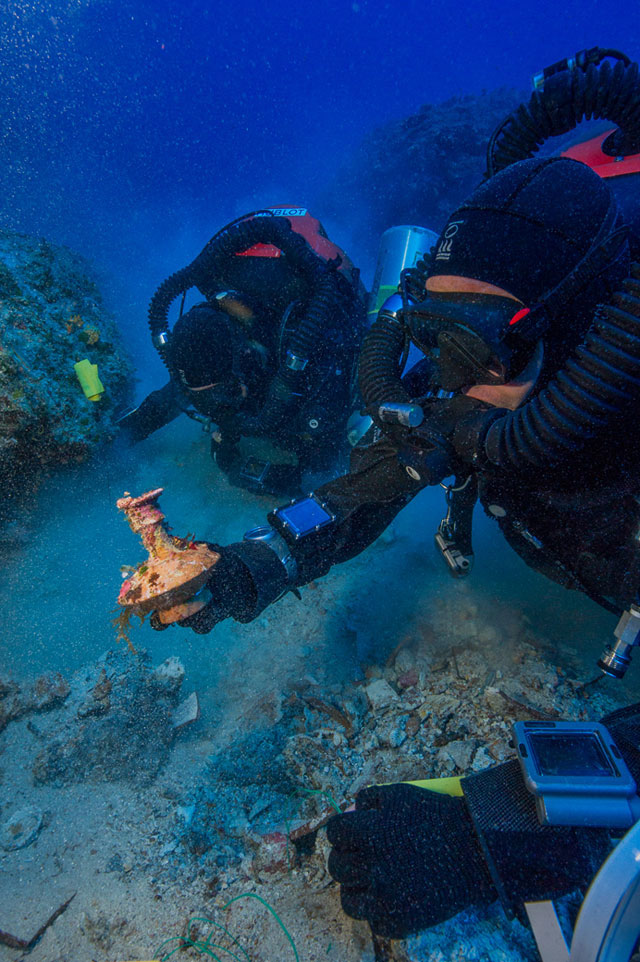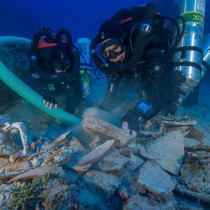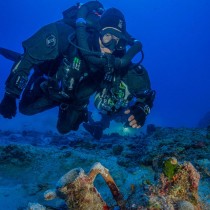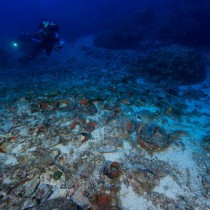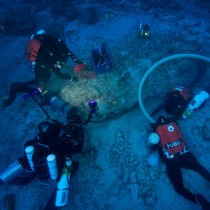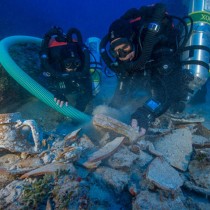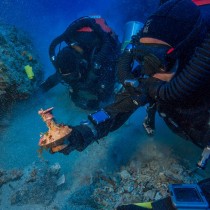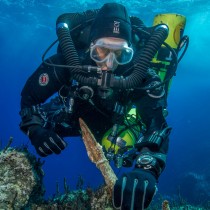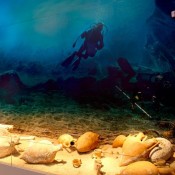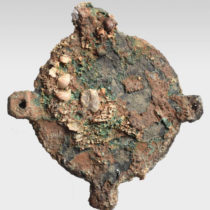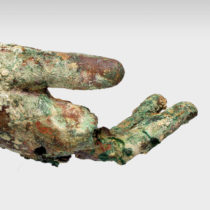Archaeologists excavating the famous ancient Greek shipwreck that yielded the Antikythera mechanism returned to the field this summer. “This shipwreck is far from exhausted,” reports project co-Director Dr. Brendan Foley, a marine archaeologist with the Woods Hole Oceanographic Institution (WHOI). “Every single dive on it delivers fabulous finds, and reveals how the ‘1 percent’ lived in the time of Caesar.”
This year’s expedition, conducted by the Greek Ephorate of Underwater Antiquities with support from the WHOI, started on 26 August and ended on 16 September 2015. The international team followed an autonomous robotic mapping effort conducted from 8-15 June in partnership with the University of Sydney, Australia. The project is the first-ever systematic excavation of this shipwreck, relying on the precise large-area map created by the robotic survey. Notably, this project marked the first time in the century since the wreck’s discovery that archaeologists were able to join specialist divers in descending to the 55-meter (180 feet) deep site. The ten-man dive team used advanced technical diving equipment including closed-circuit rebreathers and trimix breathing gases, performing 61 dives in 10 days of diving on the wreck. A remotely operated vehicle (ROV) monitored and recorded all diving activities, and served as a communications link between divers and support personnel on the surface.
The 2015 expedition has left the team with the best understanding yet of this unique shipwreck and its cargo. A metal detection survey of the site revealed that metallic targets are dispersed over an area of about 40×50 meters. This is thought to match the wreck’s debris field, indicating the vast size of the ship that sank off the forbidding cliffs of Antikythera.
Metal detectors revealed the presence of buried objects throughout the wreck site. The dive team recovered items including an intact amphora; a large lead salvage ring; two lead anchor stocks (possibly indicating the ship’s bow); fragments of lead hull sheathing; a small and finely formed lagynos (or table jug); and a chiseled rectangular stone object (possibly the base of a statuette) perforated by 12 holes and filled with an as-yet-unidentified substance.
During the project, the dive team carefully excavated a series of nine trenches in the seabed using a water dredge powered by a submersible pump. The divers recovered more than 50 artifacts, most deeply buried beneath a thick layer of coarse sand and massive deposits of broken ceramics. From among these fragments, the team recovered wooden remains from the hull of the ship; a section of bronze furniture, perhaps from a throne; part of a bone flute; a glass “chessman” board game element; bronze nails from the ship’s planks; and portions of bronze, iron, glass and ceramic objects.
“We were very lucky this year, as we excavated many finds within their context, which gave us the opportunity to take full advantage of all the archaeological information they could provide,” states diving archaeologist Dr. Theodoulou.
The team created 3D virtual reconstructions of many artifacts on the seafloor, and 3D-modeled all of the major recovered artifacts once on shore. A series of scientific analyses are now being conducted on these artifacts, including ancient DNA analysis of ceramic jars to identify the 2,000 year-old food, drinks, perfumes, and medicines contained in them. Isotopic analysis of lead objects will determine where the lead was mined, to reveal the home port of the ship.
Previously recovered artifacts from the Antikythera Shipwreck will be displayed in a special exhibition “Der Versunkene Schatz das Schiffswrack von Antikythera” [The Sunken Treasure of the Antikythera Shipwreck] at the Basel Antiquities Museum in Switzerland from 27 September 2015 to 27 March 2016. This is the first time that these ancient treasures have been allowed to leave the National Archaeological Museum in Athens.
The 2015 project team includes Greek and foreign archaeologists, technical divers, engineers, photographers, filmmakers, technicians, etc. (Y. Bitsakis, D. Conlin, J. Fardoulis, N. Giannoulakis, C. Kaiser, Μ. Kelaides, E. Kovacs, C. Lees, D. Manoliadis, Ε. O’Brien, O. Pizarro, D. Romios, B. Seymour, P. Short, G. Smith, Α. Sotiriou, A. Tourtas, Μ. Tsimperopoulos, S. Williams). The robotic mapping surveys were conducted by the Australian Centre for Field Robotics of the University of Sydney. The research team expressed gratitude to supporters of their project including the Swiss premier horology company Hublot S.A., the Swordspoint Foundation (USA), the Aikaterini Laskaridis Foundation, Jane and James Orr, private sponsors of the Woods Hole Oceanographic Institution, Costa Navarino, the Municipality of Kythera and the community and residents of Antikythera, and OTE-Cosmote, which provided telecommunications in the field.
